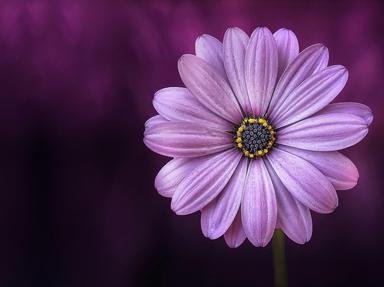Quiz Answer Key and Fun Facts
1. Our first provincial flower is a deciduous shrub that grows in the northern regions of Asia, Europe and North America. Native to the Canadian Great Plains, it is the official flower of Alberta. What sort of plant is this?
2. A low-growing shrub from the heather family. 'Epigaea repens' is the official provincial flower of Nova Scotia. Native to the east coast of North America, from Newfoundland to Florida, it can also be found inland as far west as the Northwest Territories. Which plant is this?
3. A member of the orchid family, 'Cypripedium acaule' is the provincial flower of Prince Edward Island. Found throughout Canada (except in British Columbia), it flourishes in numerous environments from coastal plains, through pine forests to mountainous regions. What type of plant is this?
4. Usually known as the blue flag in North America, this flowering herbaceous perennial plant is native to the eastern U.S. and eastern Canada. Most often seen in meadows and marshes or along the banks of streams and rivers, this is the floral emblem of the Province of Quebec. To which family of plants does this belong?
5. Our next pictured flower is a herbaceous perennial that is native to eastern North America, from Quebec to Georgia and as far west as Minnesota. Usually found in in rich, mixed upland forests, its flowers bloom in late spring and early summer. The floral emblem of Ontario, which type of plant is this?
6. The pictured 'Sarracenia purpurea' is a carnivorous plant native to much of Canada as well as the eastern U.S. and the Gulf Coast region. The provincial floral emblem of Newfoundland & Labrador, this is the only species in its family that can be found in cold climates. To which family of plants does this belong?
7. The species of edible plant pictured here is common throughout the high Arctic region as well as some mountainous regions further south including the Rockies and the Alps. Part of the rosid family and one of the first flowers to bloom in the spring, this is the floral emblem of the Nunavut Territory. What type of plant is this?
8. A perennial herbaceous plant in the willowherb family, 'Chamerion angustifolium' is native to the boreal forests of much of the Northern Hemisphere. Although sometimes grown as an ornamental plant, it is most often used to restore vegetation to damaged areas after events such as an oil spill. The floral emblem of Yukon, what is this plant?
9. A flowering plant from the buttercup (or crowfoot) family, 'Pulsatilla patens' is native to North America, Europe and northern Asia. The floral emblem of Manitoba, which type of plant is this?
10. We conclude this tour of Canadian floral emblems with a tree rather than a flower. What type of tree do you suppose might be pictured here?
Source: Author
EnglishJedi
This quiz was reviewed by FunTrivia editor
WesleyCrusher before going online.
Any errors found in FunTrivia content are routinely corrected through our feedback system.

